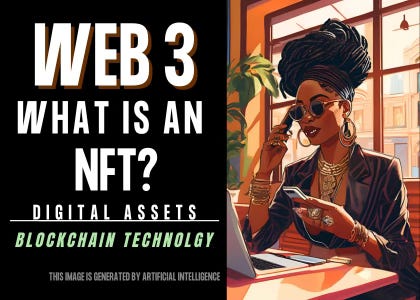What is an NFT?
Non-Fungible Tokens (NFTs) are unique digital assets that represent ownership or proof of authenticity for a specific item, stored on a blockchain. Unlike cryptocurrencies (like Bitcoin or Ethereum) that are interchangeable or "fungible," each NFT is one-of-a-kind or part of a limited collection. NFTs can represent digital or physical assets such as:
Digital Art (images, graphics, animations)
Music or Audio Files
Videos or Multimedia Content
Game Items (in-game assets, skins)
Collectibles and Memorabilia
The defining characteristics of NFTs are:
Ownership and Authenticity: Blockchain provides a verifiable, tamper-proof record of ownership.
Scarcity: Creators can control supply, making items more desirable and valuable.
Interoperability: NFTs can function across platforms or ecosystems.
Royalties: Smart contracts ensure creators earn royalties from secondary sales.
Why Are NFTs Used on the Blockchain?
NFTs leverage blockchain technology for:
Decentralization: Transactions and ownership records are stored on a distributed network, preventing fraud or duplication.
Smart Contracts: Automate royalty payments, unlocking content, and transfer of ownership.
Transparency: Anyone can verify ownership, provenance, and details of an NFT on the blockchain.
Monetization: NFTs allow creators to directly sell their work globally without intermediaries, retaining a greater share of profits.
Portability: NFT content can be integrated into various Web 3 ecosystems, such as metaverses, marketplaces, or digital platforms.
CRONE CODE #014 | OUR PERCEIVED REALITY
There is tension between living a reactive lifestyle versus an intentional lifestyle. I believe this discussion needs talked about . . . . This begins to shape the quality and direction of one’s huma…














Share this post